A stunning Chemistry Object theater production, and series of interactive exhibits, examine the ways in which pioneering Muslim scholars initiated the transition from the mystical pursuit of alchemy to the development of modern quantitative chemistry, and eventually applied chemistry.
The dramatic story of Islamic contributions to the development of chemistry is told through the lives of three famous scholars – Jabir ibn Hayyan, al-Kindi and al-Razi. The story is told in a reconstruction of an ancient chemistry laboratory. Two videos, light and sound effects and illuminated objects all help to bring the story to life.
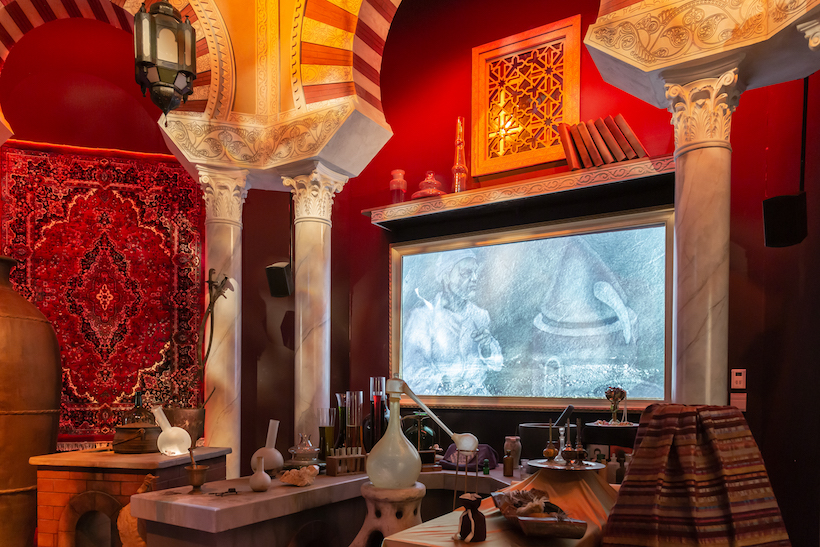
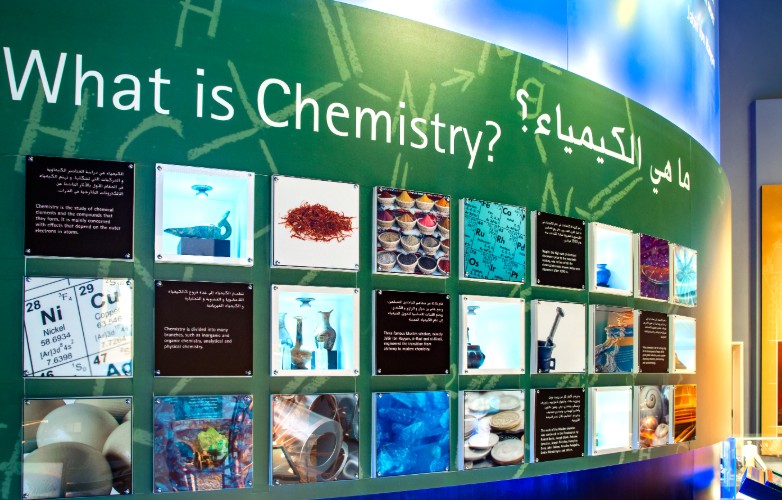
This static wall display exhibits alchemistry and chemistry apparatus and products.
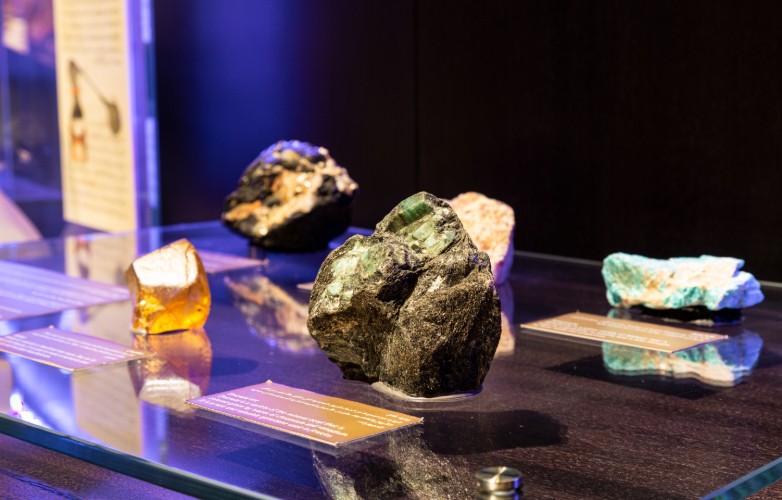
This static display shows black tourmaline, agate, amber, amazonite and emeraldine that were commonly used by Muslim chemists.
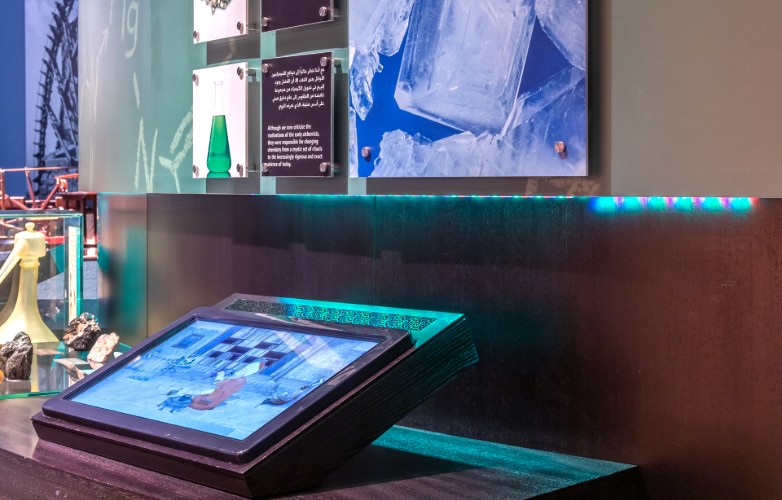
The development of alchemy is discussed in this static wall display.
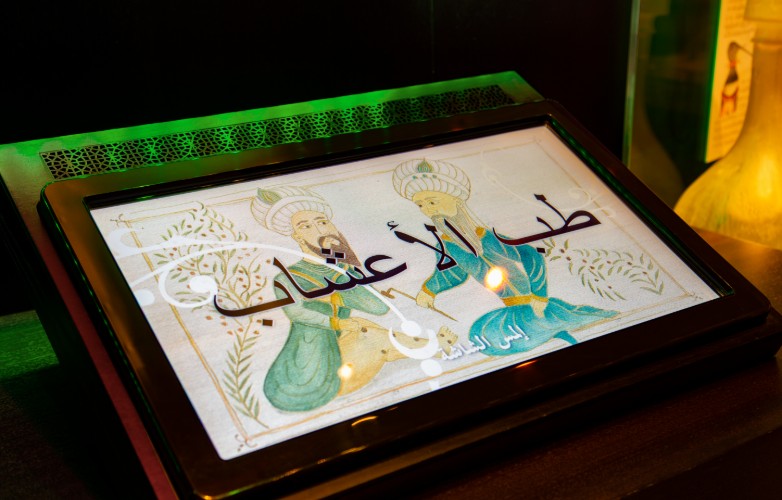
This display to explore the wide variety of leaves, stems, roots, corms and flowers that were used by early Muslim herbalists to develop herbal medications.
Early Muslim scholars had an excellent knowledge of medicinal plants, and were the first to open dispensing pharmacies in hospitals.
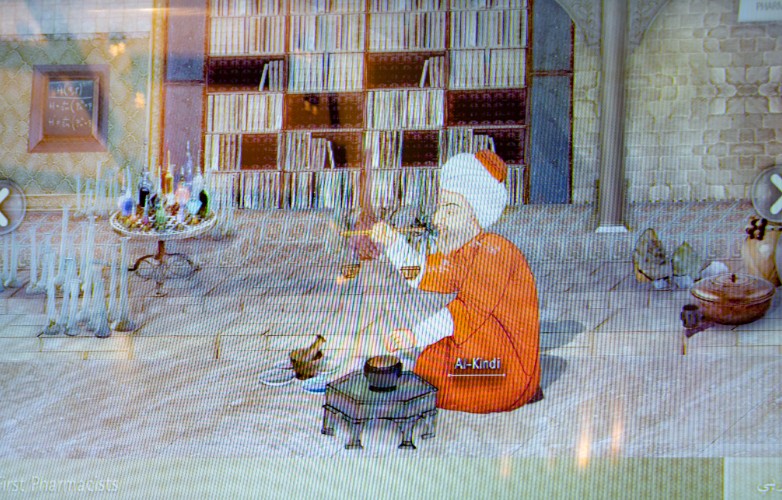

This display exhibits materials associated with the mining and working of gold, and objects made from gold.
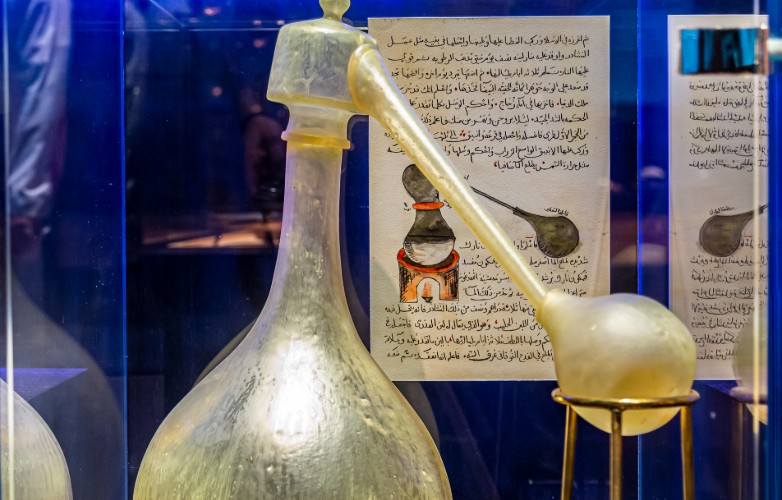
The alembic still was perfected by Jabir ibn Hayyan and other early Muslim chemists. This static display shows the components of an alembic still and retort.

This display exhibits various semi-precious stones and gemstones that were discovered or developed by Muslim scholars.